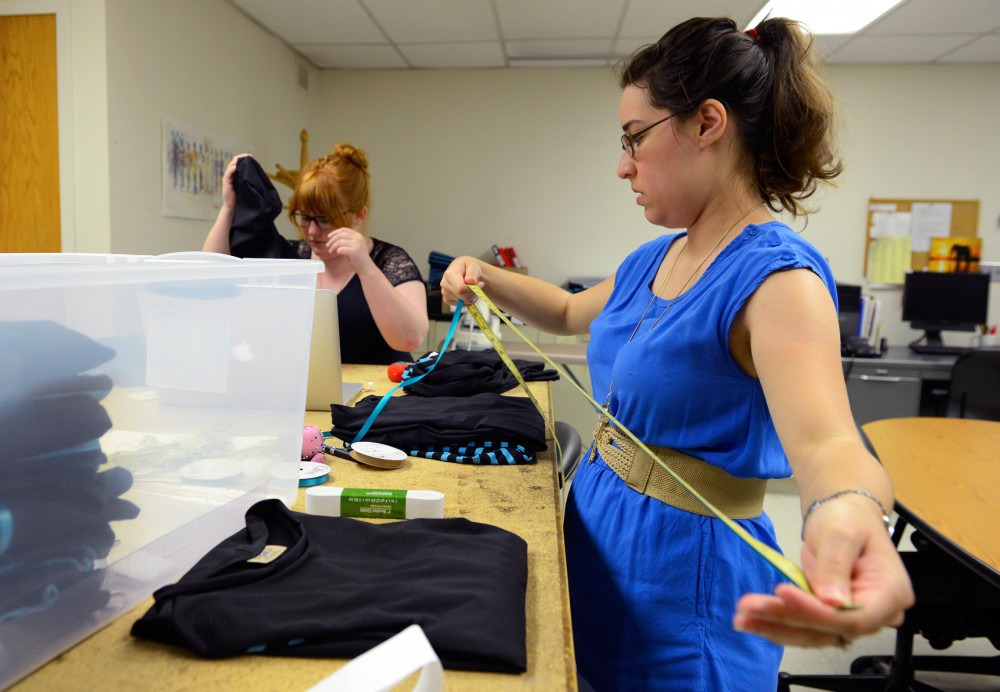As a coach and behavior specialist at Cedar Riverside Community School, Jennifer Weber witnessed East African girls struggling to handle their skirts or keep their hijabs intact while playing sports
“Teams were forming, the girls were being active, but there was nothing for them to wear,” Weber said. “You can’t cross over a basketball to a hand that’s got a skirt in it or holding a scarf.”
Researchers and students from the University of Minnesota and the Tucker Center for Research on Girls and Women in Sport worked with East African girls and their coaches, parents and community to create a solution. The team worked with 25 East African middle school girls to create fitness clothes that fit within their
cultural and religious dress standards.
The girls will present their final product in a fashion show on Wednesday at Rapson Hall.
“I see girls being given an opportunity; they deserve to compete,” said Abdirizak Bihi, father of one of the young designers. “There is no better joy to see those girls compete with other girls in other schools.”
The outfits are created from a breathable fabric and consist of leggings, flexible skirts, long sleeve shirts and a sport hijab. The sport hijab is detachable by Velcro to prevent potential injuries from competitors pulling on them.
The 25 girls are participants in the Girls Initiative in Recreation and Leisurely Sports program (G.I.R.L.S.). Fatimah Hussein founded the program in 2008 to engage East African women and girls in an active lifestyle. The group provides a women-only space for discussion and sports twice a week. There are about 50 regular participants, Weber said, who also works as a G.I.R.L.S. coach.
Over the past several years, Dr. Chelsey Thul of the School of Kiniesology and Dr. Nicole LaVoi, associate director of the Tucker Center, conducted qualitative studies to learn more about the girls’ experiences with physical activity.
“In that qualitative research, the girls do talk quite a bit about the fact that they absolutely want to be active, and their culture and religion does support activity; [a] healthy body, healthy mind. But [with] the heavier, looser, longer skirts and scarves, it can also be a barrier for physical activity,” Thul said.
Though active wear designed for East African women exists, nothing in the market focuses on the middle school and high school age groups, Thul said.
Thul, LaVoi, Hussein and Dr. Elizabeth Bye worked as co-principal investigators for the design project.
The project spanned two years. In six co-design sessions, the 25 middle school girls met with the co-design team to draft ideas.
“Those sessions were really dynamic,” Thul said. “The girls were putting their vision onto paper and making it a reality. Just to see the joy they had … that was really powerful to see,” Thul said.
After the last session, the girls displayed their drawings at an event, where parents and other community members gave feedback.
“It was great to be a part of the conversation and, along with the girls, we were given different options,” Bihi said. “There were a lot of conversations; the parents were always engaged.”
Over the summer, the design team made four prototypes which the girls presented at another community event last fall. The girls and the parents voted on which of the four would make the best uniform.
The design team hired five community members to sew the final outfits. College of Design graduate students Kira Erickson and Robin Carufel also assisted in finalizing the garments.
“In this project, there is community ownership. It’s hugely important in this process [that] our girls [have] this vehicle to present and compete. … Whether it’s choosing
it, designing it, that’s bigger than anything I’ve ever seen in this community. Usually, we see programs designed for us, and we’re not part of the process,” Bihi
said.
Each of the 25 designers will get their own uniform and tennis shoes to keep personally. In addition, the design team made 12 uniforms for a new G.I.R.L.S. traveling basketball team.
“We wouldn’t be able to do it [without the uniforms]. There’s nothing else out there,” Weber said.








